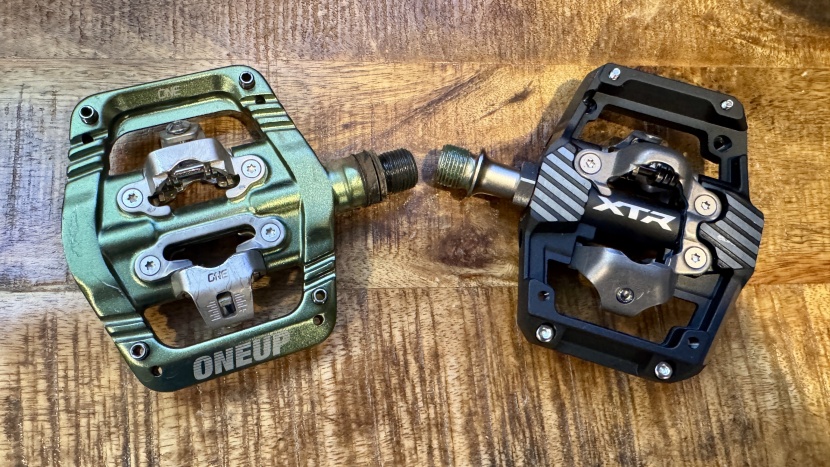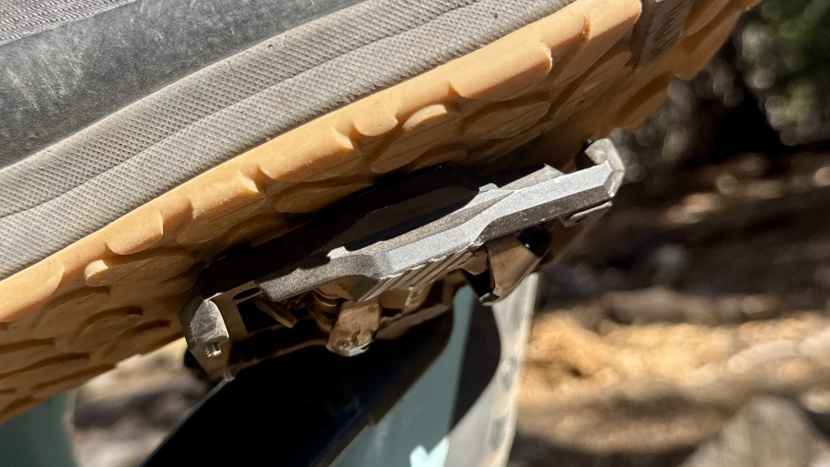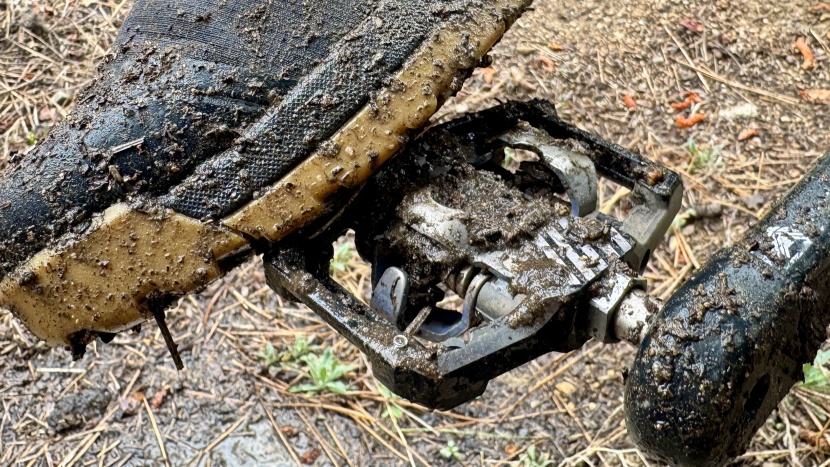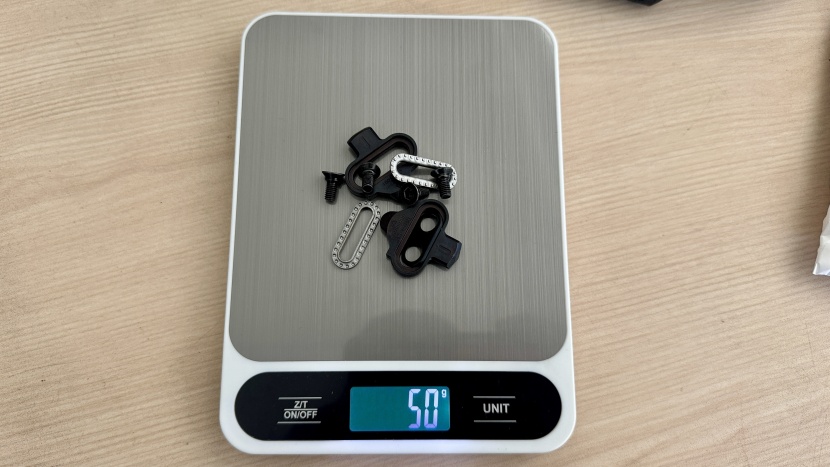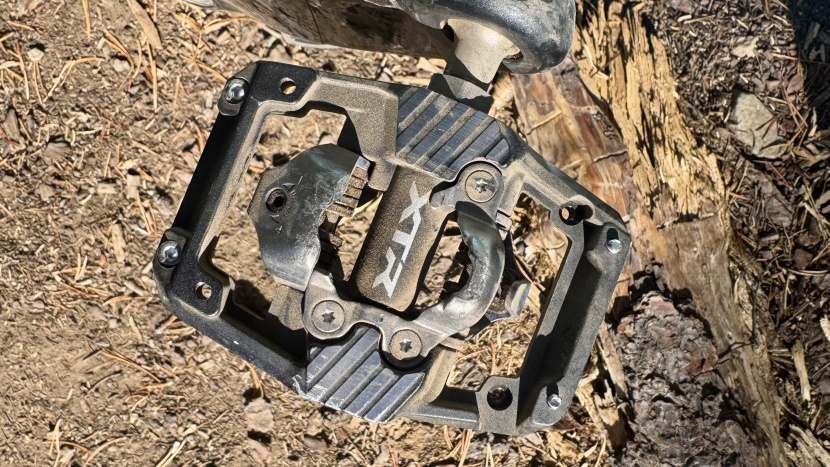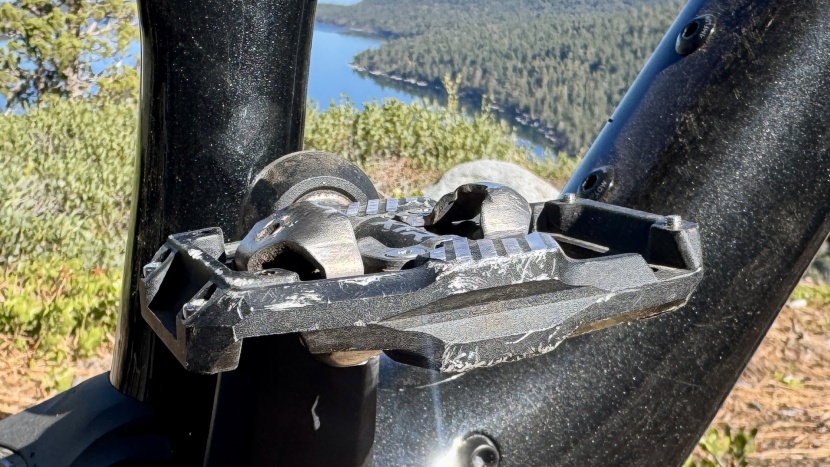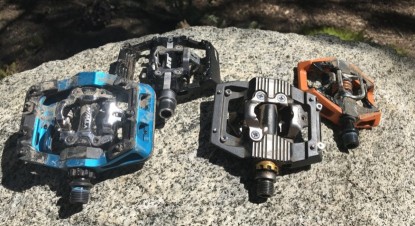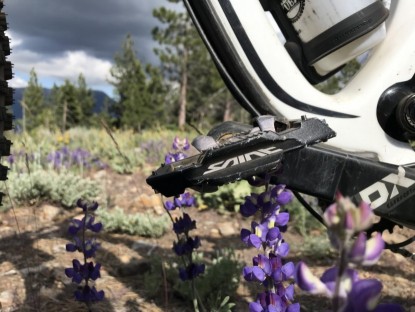
Our Verdict
Our Analysis and Test Results
Shimano appears to be heading in a different direction with the new XTR M9220. No longer a minimalist, lightweight offering, the new pedals speak squarely to today's trail and enduro rider who values performance and durability over weight savings. The new pedal features a substantial increase in size, providing more contact with the pedal body and a more robust connection.
The XTR M9220 pedal features a larger 98 x 72mm platform and removable traction pins, allowing you to customize the feel of the pedal. The body of the pedals is extruded, machined, and anodized, much like previous iterations, but the contact patches on the left and right sides of the cleat have been optimized for greater connection with your shoe. The axles use updated seals, which are expected to provide improved durability. Like previous models, they forego wrench flats in favor of an 8mm recess inside the axle. The last version of these pedals didn't feel smooth out of the box, and their durability was less than impressive. It's reassuring that the new pedals have buttery-smooth-feeling bearings.
Ease of Entry
This is the most significant change with the new pedals, and it's a major improvement. The new CL-MT001 cleat brings a big change to how you engage with the binding. Instead of the standard toe-first engagement we've become accustomed to, you can clip in simply by mashing your foot into the pedal, or by engaging the back of the cleat first. This attribute is particularly welcome on a pedal with traction pins, as they can sometimes inhibit your movement on the pedal and complicate engagement. It's worth noting that the new cleat is backward compatible, and you can enjoy this feature on your old pedals simply by replacing your cleats. I found the pedals reassuring and incredibly easy to get into, especially while riding technical lines where I didn't want to think about clipping in; I just wanted it to happen.
As with previous SPD models, you get a reassuring audible click when the binding engages, and there is no question about whether you're engaged or not. Whether using the new CL-MT001 or standard SH-51 cleats, you get a smooth and controlled 4 degrees of float.
Ease of Exit
Shimano pedals have always been amongst the easiest pedals to exit. The new cleat doesn't make it easier, but it does maintain the performance and audible “click” that lets you know you're clipped out. The larger platform and traction pins do not interfere with your shoe's ease of exit.
Whether you have the pedals dialed to the minimal or maximum tension, you still get a buttery smooth float and a feeling that you've hit the edge of float. Pushing through the next couple of degrees is where the release angle is realized. Regardless of your setting, the pedals produce an audible snap that lets you know you've released. At minimal tension, the pedals release with just a suggestion of heel snap. At the highest tension setting, your foot is far more secure, and you need to exert significant heel pressure to move against the release spring.
Adjustability
The XTR M9220 features all the adjustability of past SPD pedals, but now uses adjustable-height traction pins, allowing riders to fine-tune the extra interface behind the cleat. The traction pins on the front of the pedal can help you find and orient the pedal, but they don't interface with the sole of the shoe when you're clipped in.
You could also argue that the new multi-entry cleat is a form of adjustability. If you don't like how it feels, you can simply run SH-51 cells and get a standard-feeling entry. The new cleats are backward-compatible, so they can be added to any existing SPD pedals to enable the multi-entry feature. Overall, we're big fans of the new cleat; it offers more diverse ways to engage the pedal and makes entry feel more automatic.
Platform
The biggest change to this pedal is its platform size; many of our testers called it the mini Saint pedal for its substantial surface area. This enhanced platform provides the rider with greater stability, improved power transfer, and a slightly higher risk of pedal strikes. With modern geometry bringing bottom brackets so close to the ground, the precious millimeters below your shoe are crucial. We loved the width of this platform, but didn't feel the fore-and-aft sections contributed much to the pedal's stability while riding. We had no issues engaging the pedal, but that holds true for the new Shimano XTR M9200 as well.
The new pedal is 98mm long, accounting for the bias from both sides, but the usable platform per side measures 91mm. The machined surface provides support and a bit of friction to your float. The trend toward larger platforms has been a positive for riders of clipless pedals who can rely less on the stiffness of a shoe. Pedals have also been trending thinner; the OneUp Clip pedal measures a scant 14.4mm at the center, and this trend isn't one Shimano is following. With a platform thickness of 18mm, they actually have a higher profile than the last generation of XTR trail pedals.
This higher profile, albeit only a few millimeters, puts you higher above the bike, while increasing your risk of pedal strikes. We could hope this means increased durability, but there's nothing harder on your pedal and its bearings than striking a rock.
Weight
The XTR Trail 9120 was heavier than its predecessor, the XTR Trail 9020, so perhaps it's no surprise that the XTR Trail 9220 is even heavier than the pedal it replaces. That increase in weight is another area where Shimano is bucking the trend. At 444 grams, they weigh 30 grams more than the OneUp clip pedal and 124 grams more than the XC-oriented XTR M9200 pedals.
While the weight isn't a deal breaker, it's not what we expected from Shimano's flagship race equipment. The traction pins add 0.5 grams each, and each pedal can hold 8 pins.
Mud Shedding Ability
While XTR pedals have always had top-notch mud-shedding abilities, the addition of the large platform makes the new pedals a bit less adept in the muck. There were several times during testing these pedals in the mud when we had issues engaging the binding.
We could resolve the issue each time with a swift kick or two, but if you're frequently riding in wet and mucky conditions, you can probably do better with a different pedal. The XTR M9200 performed flawlessly in the mud, and the OneUp Clip pedal also performed respectably, but wasn't immune to all clogging issues.
Value
These are the XTR pedals, and value isn't exactly the aim of that groupo. Shimano has many other lines of products that deliver value to consumers, but XTR has always been the small incremental gains for quite a bit more of your allowance. We suspect there will be an XT version of this pedal coming soon, and that pedal will likely have a more value-oriented price point.
Conclusion
This pedal rides really well and lives up to Shimano's promises of greater connection and power transfer, but so do many other pedals on the market. Our favorite “clipless” pedal is the aptly named OneUp Clip pedal; it's 30 grams lighter, 3.6mm thinner, and costs $100 less. It's also available in a wide array of colors, and if you like the idea of multi-entry cleats, it's compatible with Shimano's new cleats.



